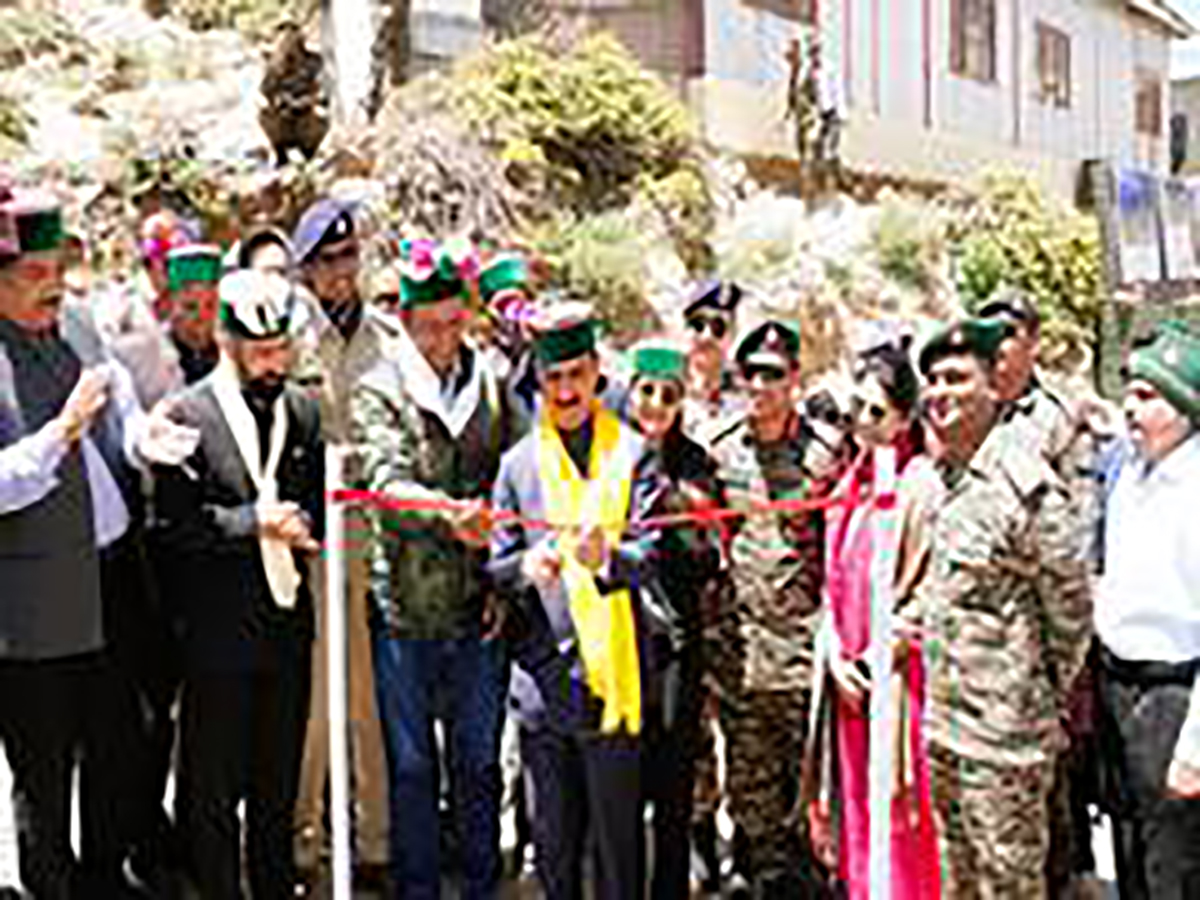
Kinnaur: Himachal Pradesh Sukhvinder Singh Sukhu on Tuesday launched border tourism activities from Shipki La in tribal Kinnaur district along the Indo-Tibet-China border, stating that the state would now work towards opening the Kailash Mansarovar Yatra route through the Indo-Tibet-China border.
“Now that we have opened this border point for tourism, our next focus will be on opening the Kailash Mansarovar Yatra route from here. Mount Kailash is just 92 kilometres from this point,” Sukhu said addressing a gathering at Namgya village, located near the high-altitude Shipki Pass, around 310 km from Shimla.
The Chief Minister said discussions with the Central Government and necessary coordination with Chinese authorities would be required, but added, “If approvals come, this will become the most accessible and shortest route for the yatra from Indian territory.”
The Chief Minister recalled former Prime Minister Indira Gandhi’s visit to the Shipki Pass nearly six decades ago.
“She travelled here on horseback to spread the message of national unity. That spirit lives on as we reopen this site for tourism. Our next step must be to establish the Mansarovar Yatra route from here,” he said
The initiative marks a significant move to boost eco-tourism and livelihood opportunities in the high-altitude tribal belt. The region, which once functioned as a traditional Indo-Tibet trade route, had remained closed to tourism due to security and pandemic-related restrictions.
Welcoming the decision, Indar Singh, a former Pradhan of Namgya, said: “I thank the state government for this historic decision. The opening of Shipki La will create employment for educated but jobless youth in the area. This will increase income, promote tourism, and help revive our economy.”
Singh recalled the historical significance of the region, noting that in 1968, former Prime Minister Indira Gandhi had travelled to the Shipki Pass on horseback, a moment etched in local memory.
“This pass was earlier open for trade with Tibet. We had a barter system under the Indo-China Trade Circuit, which was shut down during COVID. We want the government to consider now reopening the trade route as well,” he said.
Dorje Dolkar, a local woman, said the move would significantly help locals involved in tourism.
“This is a great step. It will benefit taxi drivers, villagers, and hotel operators. More tourists will mean more jobs,” she said.
Another local resident, Sarswati Negi, said, “This tourism opening will give opportunities to local youth who are unemployed. They can now start businesses. I also hope this helps us get access to the Mansarovar Yatra in the future. Roads need widening, and proper facilities like parking must be developed.”
Baldev Singh Negi, Pradhan of the Namgya Gram Panchayat, echoed the need for improved infrastructure.
“I thank CM Sukhu and Revenue Minister Jagat Singh Negi. Educated, unemployed youth will benefit. This region has trekking routes and an 800-year-old temple with a natural idol of Lama Ji. But roads are narrow and must be widened,” he said.
Speaking on the occasion, Tribal Development, Horticulture and Revenue Minister Jagat Singh Negi said the move held both strategic and emotional significance for the locals.
“Some limited trade was ongoing earlier, but it was halted during COVID. We are now working to develop infrastructure and explore possibilities of reviving trade as well,” he said.
The state government has also acknowledged the need for other facilities. Locals have demanded a parking facility for at least 100 vehicles and better road access to the region.
The tourism move is expected to bring economic activity to the remote villages near the border, while also reinforcing India’s civilian presence in a strategically sensitive area along the Line of Actual Control.
